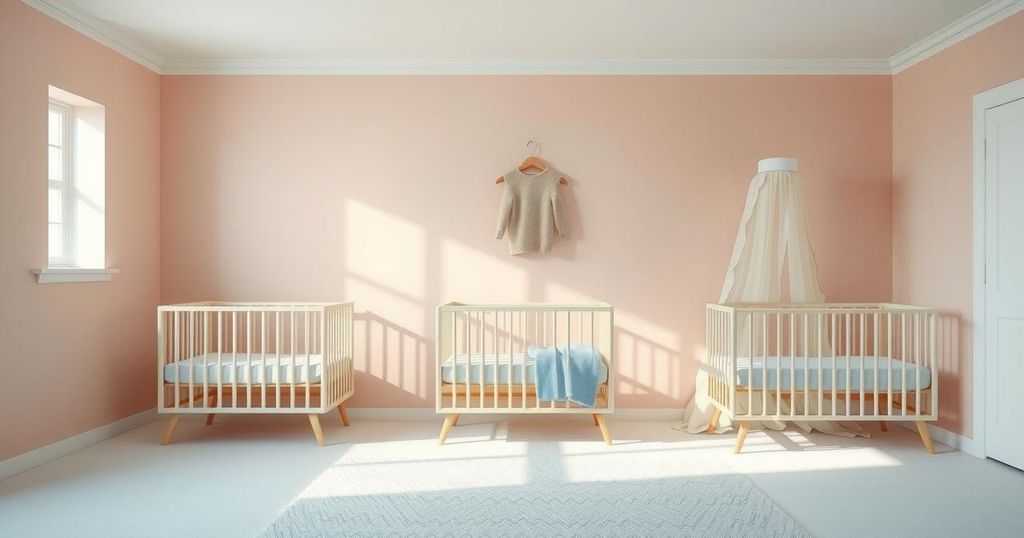Argentina’s Declining Birth Rate Reflects Profound Demographic Changes

Argentina’s birth rate has fallen nearly 40% over the last decade, hitting a record low. In 2023, there were 460,902 births, down 7% from the previous year. The national fertility rate is now at 1.4 children per woman, clearly below replacement levels. Economic instability, the legalization of abortion, and changing societal values appear to be key reasons behind this decline. This demographic shift may lead to significant challenges in various sectors.
Argentina is facing a significant challenge as its birth rate has plummeted nearly 40% in the last decade. This trend has resulted in the lowest recorded birth rates in over 50 years, with 2023 statistics showing just 460,902 births. This marks a 7% fall from the previous year and a staggering 41% decline since 2014, when there were 777,012 births. The crude birth rate hit a historic low of 9.9 births per 1,000 inhabitants, drawing comparisons to European countries experiencing similar low fertility rates.
According to a report from Austral University of Argentina, the national fertility rate has sunk to 1.4 children per woman—well below the replacement ratio needed for a stable population. This trend hints at an aging population and suggests a possible long-term drop in total population size if these patterns continue. In related findings, a notable shift in family structures has emerged, with households without children under 18 rising from 44% in 1991 to 57% in 2022.
President Javier Milei has expressed his alarm over this declining birth rate. He links the issue primarily to the legalization of abortion in 2020 and other progressive measures. In his campaign, Milei pledged to repeal the abortion law and even hinted at the possibility of a referendum to address it, though such measures have not yet surfaced in his administration’s agenda.
While Milei’s administration has cut back on contraceptive distribution and dismantled sexual health programs under the banner of public spending cuts, the data tells a different story. The number of legal abortions increased from 73,000 in 2021 to over 107,000 in 2023, indicating that despite decreasing birth rates, demand for abortion services is on the rise. Experts suggest that the economic climate, including rampant inflation and job instability, plays a significant role in influencing couples’ decisions about parenthood.
The average age for a first-time parent has crept up to 30-34 years, reflecting a societal shift towards prioritizing education and career development. Trends among women reveal that those with lower educational attainment have experienced a 77% decline in births since 2005, while those more educated have seen drops of 13% and 7%, respectively.
Research from consulting firm Sentimientos Públicos notes 20% of individuals under 30 do not wish to have children, with many choosing to focus on other life goals. Interestingly, this figure drops to 11% among millennials aged 30 to 44, with a mere 10% citing finances as a main concern.
The ramifications of declining birth and fertility rates are significant and may pose serious challenges. The population aging index has surged from 29 in 1991 to a projected 60.55 by 2025, with the proportion of those aged over 85 having doubled in two decades. This trend has wide-reaching implications for healthcare, education, and the economy.
The dramatic decline in Argentina’s birth and fertility rates signals significant demographic changes that need urgent attention. Factors such as the rise in abortion rates and economic instability complicate the issue. As household structures evolve and priorities shift, the implications for the nation’s future are profound, impacting everything from healthcare systems to pensions as the population ages.
Original Source: www.upi.com








